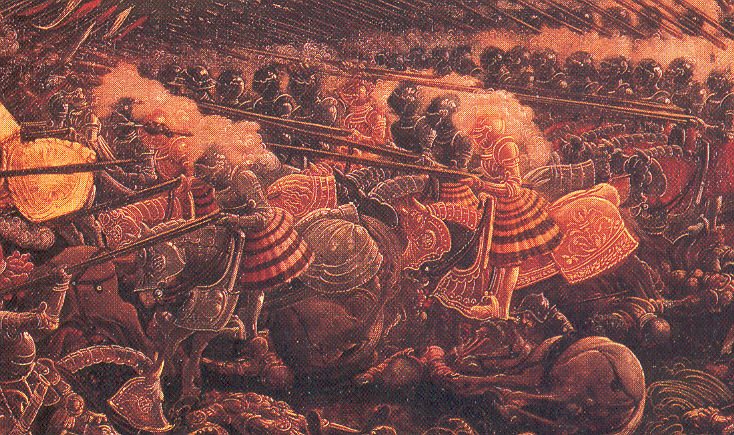In the period of the Renaissance it was the gentleman who set not only the pattern of personal bravery but also maintained an element of decorum in the operations of the armies…. In [Charles de Cossé, count of] Brissac’s general orders for his campaign in Northern Italy in 1551…. Punishment was promised for those men who “blasphemed the name of God or the Virgin,” and anyone guilty of desecrating churches or raping women would be put to death….

French Gendarmes in the Italian Wars, early to mid sixteenth century, part of the Renaissance time period.
The gentleman of the Renaissance by tradition and training was prepared many times in his life to ride off to war. He was expected as a symbol to provide for his men a high order of bravery and inspiring leadership. He had to be able to control human beings rather than guide machines.
William Leon Wiley, The Gentleman of Renaissance France (Cambridge: Harvard University Press, 1954), pp. 175-176.










